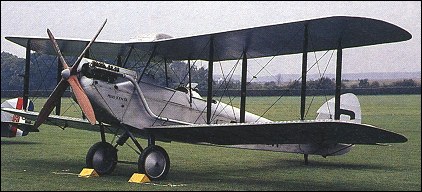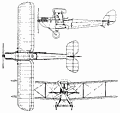 |
De Havilland D.H.511924 |  |
| THREE-SEAT TOURING BIPLANE | Virtual Aircraft Museum / United Kingdom / De Havilland |
 |
Following the D.H.37 two-seat tourer of 1922, de Havilland's next aircraft in this category was the de Havilland D.H.51. However, in this case economy of operation was a criterion and the design was developed around the 67kW R.A.F.1A engine, of which warsurplus supplies were available at knockdown prices. First flown in July 1924 by Geoffrey de Havilland, the D.H.51 proved to be satisfactory, but since the engine did not have dual ignition a Certificate of Airworthiness was refused. Ten hours of airborne testing would have been required with the single-ignition RAF1A, but de Havilland decided that the cost of this was not justified. As things turned out this was probably a major error of judgement, since once certificated the type might have gone on to achieve the fame which was to come later with the D.H.60, the first of the Moths. It was decided to re-engine the D.H.51 with an Airdisco engine and this move, although conferring considerably enhanced performance, took the aircraft well outside the economic operating bracket for which it was designed. As a result, only three were built; the first two enjoyed reasonably long and active lives, being written-off in 1931 and scrapped in 1933 respectively, but the third, built in 1925 and shipped to Kenya, became the first aircraft on that country's civil register. Dismantled during the war, it survived to fly again and now, after several rebuilds, is again back in the country of its birth, maintained by the Shuttleworth Trust at Old Warden as the oldest airworthy design of the de Havilland Aircraft Company.
|  COMPANY PROFILE | |||||||||||||||||||||||||||||||||||||||||||||||||||
 |

|


Would be happy to chat to you..... MJB
reply